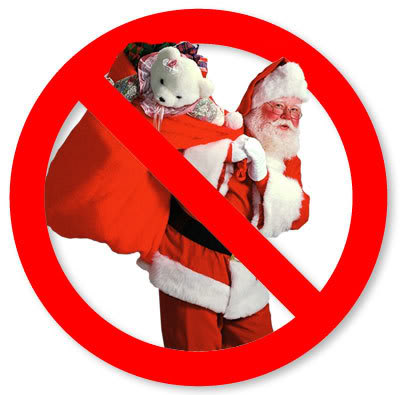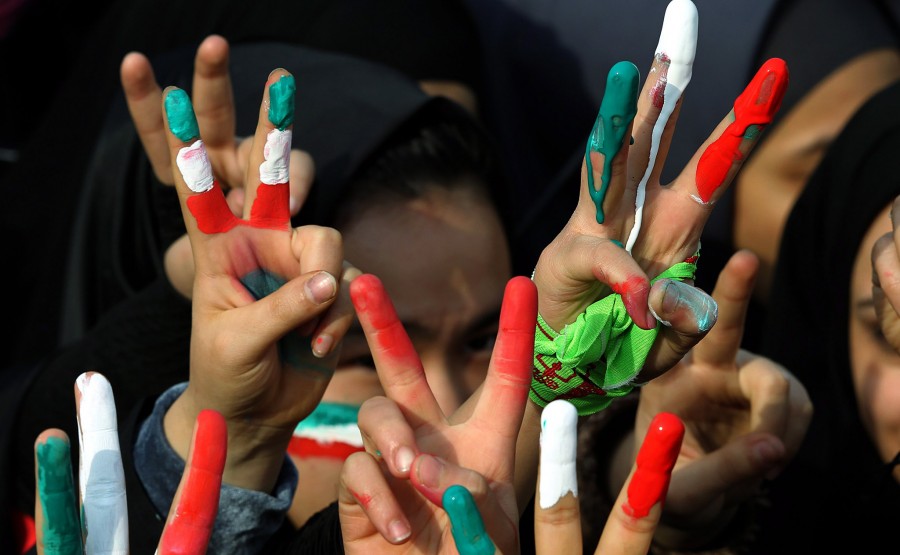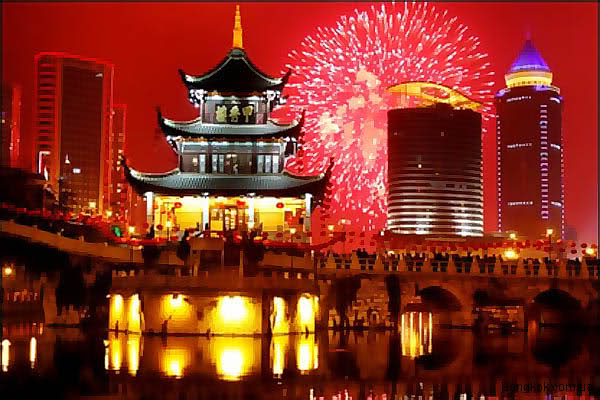About the new year. Interesting facts about the new year
For the seventh century BC, the calendar consisted of 9 months and opened it in March, and closed it in December. After the reform of Numa Pompilius, the second king of ancient Rome, January and February were added, which became the penultimate and last months in the calendar, respectively, but this did not add to its accuracy. By order of Julius Caesar in 46 BC. a more perfect calendar was created, in which the year opened in March and ended in February. In Russia, the same system of chronology was adopted, the New Year itself began on the day of the vernal equinox, when the ram sign entered into law in the zodiac system. By the way, it is not in vain that they say that Aries is the first sign of the zodiac. That is, if you think about it, a variety of facts contradict the celebration of the New Year in winter. In 1582, Pope Gregory XIII introduced the modern calendar, which is called the Gregorian. In it, the year begins with January, followed by January, March, and so on. Although even the names of the months indicate that they are in a completely different order. After all, the names of 6 months are dedicated to the gods of the Roman pantheon or named after the rulers. And six more are ordinary numerals converted from Latin. March (lat. Martius) The mythical founder of Rome, Romulus, honored the god of war Mars as his father, and when the first calendar was created, he devoted a whole month of the year to his divine progenitor. And again we observe connotations with the zodiac, because the planet Mars is responsible for the sign of Aries. April (lat. Aprilis) The word arose on the basis of the word "aprikus", which means - warmed by the sun. There is another version. The word comes from lat. aperire (lat. Aprilis) - “to open, the beginning.” The third version says that the word april is born from the name Aprilis, Greek interpretation the name of the goddess Aphrodite. That is, April is named after the ancient Greek goddess of love and beauty, Aphrodite. May (lat. Maius) The month is named after the Roman goddess of fertility, earth, mountains, spring and harvest - Maya. June (lat. Junius) Formed on behalf of Juno. That was the name of the wife of the god Jupiter, guarding marriages, giving abundance, bringing people success and good luck. July (lat. Julius) The month, as is clear from the consonance, is formed on behalf of the great Roman commander and emperor Julius Caesar. Since he appointed a reform of the calendar, he was called the Julian. August (lat. Augustus) The word "Augustus" meant "majestic". For the first time it became the title, and then the proper name of Emperor Octavian (adoptive son of Julius Caesar). In history, the emperor is also known as Augustus. By decision of the Senate, the former sextile (sixth month) was renamed August. But the following months both bore the names of numerals and bear them. September (lat. September) Septem is Latin for the seventh. The English name of the month is September. October (lat. October) In Latin - octo, the eighth. The English name of the month is October. November (lat. November) In Latin, novem, the ninth. The English name of the month is November. December (lat. December) In Latin - decem, the tenth. The English name for the month is December. January (lat. Januarius) The month is named after the ancient Roman god of time, roads, the patron saint of travelers and sailors. Janus two-faced is not only the god of time, but also the deity of the beginning and end, the symbol of entrances and exits. Janua is Latin for door. Janus is depicted with two faces. The young, cheerful face is turned to the right, forward, into the future, and the old, gloomy face is turned back, to the left, into the past. The resulting expression - Janus two-faced - means a two-faced person. By the way, here we can also trace the connotation with Capricorns, who are born on the first 20 days of the month. Capricorns, unlike other signs of the zodiac, old men in childhood, become younger in soul with age. And that's what makes them look like Janus. One of the horoscopes even provides a detailed comparison with this god, also because the planet Saturn, which rules Capricorns, is responsible for time, its movement, which is also comparative characteristic sign. February (lat. Februarius) The name comes from the word "februarus", (lat. Februarius) - from lat. februare, which means cleansing, making an atoning sacrifice. Some researchers suggest that the semantics of the word goes back to the name of the god Februs, the god of death and the underworld. realms of the dead. In February, the Romans celebrated "Dies Februtus", a holiday of purification from the filth and sins accumulated in the soul. *** Various historical upheavals brought confusion and confusion to the celebration of the New Year. . Have you thought about the symbolism of this holiday? What do we congratulate each other on? Data on the order have been recorded in the complete collection of laws of the Russian Empire since 1649. The specific quotation is from Volume III (1689-1699). - St. Petersburg, 1830. - S. 680-681. - No. 1735). “On writing henceforth Genvar from the 1st day of 1700 in all papers of the summer from the Nativity of Christ, and not from the Creation of the World.” The decree of Peter I said: “On the noble and passable streets at the gates and houses, make some decorations from trees and branches of pine, spruce and juniper, repair shooting from small cannons and guns, launch rockets and light fires. And for meager people, everyone should at least put a tree or a branch on the gate. But we will talk about Christmas trees and decorations below. There is a well-known Jewish custom of circumcision of the foreskin of born boys. Circumcision occurs on the seventh or eighth day after birth. And since Jesus, according to historical data, was born on the night of December 24-25, after the specified period he was circumcised. It happened just on the night of January 1st. Hence the appearance of the word Year. Think about how the words sound. Chronicle. Many years of life. How old are you. In the languages spoken by Peter's mentors from Germany and Holland, there is the word God, which means God. Therefore, the words Happy New Year mean Happy New God. Perhaps the desire to plant a Christian culture was based in the mind of Peter, because in fact the Russians from now on had to glorify God at the holiday. But in fact, it turns out that in the New Year we celebrate nothing more than a rite of inclusion of Jesus in the Jewish brotherhood. In 1700, Russia celebrated the 7208th New Year. It turns out that the great sovereign simply robbed his people, depriving him of the culture accumulated over the previous 5508 years of existence. In Russia, there were such terms that denoted long-forgotten phenomena, Yav, Nav and Rule. There were also their own gods, including Frost, which will be discussed in the next article and which has nothing to do with the celebration of the New Year. Instead of the current New Year, the Russians celebrated Kolyada, it really happened on December 25. And New Year began on the New Year, that is, during the autumn equinox. Incidentally, in some European countries the end of summer (summer period) is still considered not the last day of August, it is the day of the autumn equinox - September 22. Unfortunately, the vast majority of people do not know that in reality this date does not mean the end of the summer period, but the end of Summer, i.e. calendar year. But, nevertheless, this is also a fact that says a lot ... And when do they carol now? Remember what they timed for and how they distorted the custom. For the Nativity of Christ, which the Orthodox Church celebrates on January 7, and the Catholic Church on December 25. And to Christmas time, which have absolutely nothing to do with church rituals. *** By the way, the discrepancy is due precisely to the initial lack of knowledge about the exact date of the birth of Christ. The first Christians in Europe started celebrating the birth of a son of God around the third century AD. In the same century, Christians began to celebrate the triple feast of the birth-baptism-theophany of Christ from January. Historical data shows that on January 6, many religions of the world include the celebration of their gods. In Egypt it is Osiris, in Greece it is Dionysus, in Arabia it is Dusar. It turns out that the traditions are not taken from nowhere, but in accordance with the world's religious cycles. In 354, the Christian Church established the celebration of the Nativity of Christ on December 25 of each year, the believers celebrated Epiphany and Epiphany on January 6. The transfer of the date of the celebration of Christmas to January 7 was generated by the desire of Christians to suppress the cult of celebrating the birth of the solar god Mirta in Rome. Then this religion was official, and the zealots of Christianity had to work hard to force the holiday date out of people's minds. Actually, nothing happened, and in order not to shed blood, Christian ministers simply set their holiday on the day of the celebration of the birth of Mirta. By the way, Jesus borrowed much from the image of Mirta into his image, namely the radiant crown above his head, symbolizing the glow of the sun among the Romans. And Christians interpreted this glow as the presence of a halo, a holy halo around a person who spoke about his spirituality. Western churches continue to celebrate Christmas on December 25, and in the territory of the former Rome and in Russia, Christmas is celebrated on January 7th. During the period of Russian Christmas time, Saturnalia were held in Rome (celebration of days, the name of which paid tribute to the god Saturn, who conquered winter). It was customary to give gifts. The popularity of Christmas was undermined during the years of the Reformation (tentatively the beginning of the 16th century), but then it began to be considered a pagan holiday due to the many non-Christian rites. The temporary discrepancy between the celebration of Christmas by various churches is currently due to the fact that a number of churches (Russian, Bulgarian, Serbian and other Orthodox churches) use the Julian calendar, December 25th of which corresponds to January 7th Gregorian calendar.Since the Slavs at that time were just beginning to celebrate Christmas time, which began on December days and ended in early January, the Christian religion tried to ban games and caroling. Prohibitions were reflected in the laws of the Russian Empire. Christmas rituals successfully formed the basis of the new "Christmas time", so many mistakenly believe them to be Christian customs. The new Sun is born on Kolyada, and is born (comes to Reality) only on the New Year (Autumn Equinox). It turns out that the ROC has nothing to do with either the Russian people or the Rule, although modern religion allows people to approach God, but the point here is not at all in Christianity itself or in another belief. Whoever wants to, will approach God both without any religion and with it. Religion is here as a tool, but that is not the point. But if the New Year began in the fall, then why is March the first month of the year? Why not September? Because this is not a Slavic calculus of months. The Slavs called the months as follows. January - Frost February - Luten March - Birch April - Queten May - Traven June - Cherven July - Lipen August - Serpen September - Veresen October - Yellow November - Leaf fall December - Breast In the spring there was also a New Year, but already an agricultural one. Now many have forgotten, and some never knew that Maslenitsa is not just a meeting of spring. Perhaps, few people will remember the assumption that Maslenitsa used to be called Komoyeditsa, marking the onset of the spring equinox. The spring equinox is one of the four main holidays of the year in the ancient pagan tradition. In fact, this is the agricultural New Year. In this sense, the Slavic calendar corresponds to the Roman one. If we touch on the creation of the Slavic calendar itself, which counted years, and not years, then its history is as follows. The event from which the years were counted was the Creation of the World in the Star Temple (5508 BC .), it was not at all the creation of the universe by the biblical god, but literally: the signing of a peace treaty in the year Star Temple according to Krugolet Chislobog after the victory of the Power of the Great Race (in the modern sense - Russia) over the empire of the Great Dragon (in the modern sense - China). By the way, the symbolic image of a rider on a white horse slaying a dragon, known in Christian tradition as George the Victorious, actually symbolizes just this victory. That is why this symbol has long been so widespread and revered in Russia among the Slavic-Aryan peoples. For referenceAlthough the information given is indirectly related to the topic, we will nevertheless voice it. By the way, these facts are also related to Russian fairy tales, in which, to one degree or another, the symbols of Russian legends, the principles of the chronicle and ancestral holidays are seen. , the nine-headed Serpent Gorynych, in order to free Vasilisa the Beautiful. Each of the Russian fairy tales ended with the line: "The fairy tale is a lie, but there is a hint in it, a lesson for good fellows." What is the lesson in this tale? In it, under the image of Vasilisa the Beautiful, the image of the Motherland is hidden. Under Ivan Tsarevich - a collective image of Russian knights liberating their homeland from enemies: the Serpent Gorynych - the Great Dragon - the troops of Arimia, in other words, China. This tale immortalized the victory over China, the symbol of which was a warrior piercing a snake-dragon with a spear. No matter what this symbol is called now, its essence remains the same - a great victory Russian (Slavic) weapons over the enemy 7511 years ago. But, unfortunately, everyone unanimously “forgot” about this victory.The work is done in the technique of patchwork appliqué with elements of patchwork. . The work of Ksenia Shlyakova, pos. Nerekhta, Kostroma region The victory was so significant and difficult that the Day of the Creation of the World - the conclusion of a peace treaty (September 22 according to the Christian calendar) - was chosen by our ancestors as a new, turning point in their history. According to this Slavic calendar, now is summer, year 7511 from S.M. (Creation of the World). And the great wall of China was erected after this victory by Arimia (China) in order to forever separate itself from the invincible Russeniya (Russia). As for the presence of a Christmas tree on the New Year's holiday, a separate story is born here, which you can read about in our
The world is celebrating the arrival of the New Year. Without a doubt, this is the most beloved date of all people, when children and adults enjoy the change of year. Some celebrate this holiday at home surrounded by relatives, others spend the evening in a restaurant with friends, others rent a small house in the mountains, and go sledding and skiing in the morning. There are a lot of options to celebrate the upcoming New Year, it all depends solely on your taste.
In most countries that live according to the Gregorian calendar system, the onset of the New Year falls on the night of December 31 to 1st of January. This holiday was founded in 46 BC. e. in the ancient Roman state. At that time, the date was dedicated to the god Janus. AT Russian Empire Until the 15th century, the New Year was celebrated on the first day of spring, and after that on September 1, according to the Julian calendar. People began to celebrate the arrival of the new year on January 1 only in 1700 by decree of Peter the Great.
On the eve of the holiday in every apartment, restaurant, office and on the street you can admire the beauty of the New Year tree, with colorful balls, shiny garlands, original toys. But few people know why we decorate the house with spruce. On the day when Jesus entered the gates of Jerusalem, joyful people greeted him with palm branches. And now in hot countries a palm tree is used as a New Year's tree, but they do not grow in our country, therefore, instead of palm branches, willow was used for a long time. In the Middle Ages, an old pagan custom and German tradition united on Christmas Eve to go to the forest for a fir tree and decorate the house with it. After the adoption of Christianity by the Germans, the Christmas tree began to be used as a New Year's tree.
In each country, the arrival of the New Year is celebrated differently. In Spain, during the chimes, it is customary to consume 12 grapes. Residents of the sunny state are sure that if you have time to eat the required number of berries, you can count on good luck in the coming year. In the US, at exactly 12 o'clock at night, people kiss. Also, Americans are scrupulous about the New Year's outfit, choosing bright things that symbolize a happy life. The British decorate their homes with mistletoe branches. In Cuba, the New Year's Eve is always “wet”, as the locals fill all the available containers with water in advance and throw it out of the window at midnight.
In Italy, unnecessary old things are thrown away before the holiday, so a bunch of junk on the streets and porches at this time is a common occurrence. Colombians celebrate the celebration on a grand scale, launching a huge number of fireworks and arranging festivities. And the artist on stilts symbolizes the outgoing year. In Japan, at this time, bells ring, striking 108 times. Each blow means one of the human shortcomings. Despite the fact that there are 6 vices in total, the Japanese are convinced that any of them has 18 shades.
Happy New Year!
REASON 1: NON-CHURCH, NON-ORTHODOX CHARACTER OF THE DATE ITSELF
 In the Holy Church there is a certain date of the New Year (the beginning of the indiction) - September 1 (September 14, according to the new style). It is to this date that the corresponding liturgical service is timed. The civil New Year, celebrated in winter, has nothing to do with the church calendar, but was introduced in Russia by Peter I in 1700, in imitation of Europe (although it was celebrated according to the Julian calendar, and not according to the so-called Catholic Gregorian new style, like in Europe).
In the Holy Church there is a certain date of the New Year (the beginning of the indiction) - September 1 (September 14, according to the new style). It is to this date that the corresponding liturgical service is timed. The civil New Year, celebrated in winter, has nothing to do with the church calendar, but was introduced in Russia by Peter I in 1700, in imitation of Europe (although it was celebrated according to the Julian calendar, and not according to the so-called Catholic Gregorian new style, like in Europe).
But the New Year, celebrated on January 1, was withdrawn from the liturgical circle and acquired a non-Christian character, as evidenced by many Russian saints, for example, St. Theophan the Recluse and St. Righteous John of Kronstadt. They denounced the Russian people that, imitating the apostate West, they began to celebrate the New Year in a pagan way: “Spinning around with glasses - what's the point?<…>You will say: the custom has gone. - And I will confirm: the custom has gone, - and I will add: the custom is not at all Christian, but pagan, impious, ungodly" (St. Theophan the Recluse. Sermon on Theophany, January 6, 1865).
With the introduction by the Bolsheviks after the revolution of a new style, the current civil calendar, the celebration of the New Year on January 1 began to fall on it. last days Advent - the days on which Typicon commands Orthodox Christians strict abstinence.
REASON 2: THE ANTI-CHRISTIAN CHARACTER OF THE NEW YEAR
The modern New Year, preserved from Soviet times, and the celebrations associated with it were initially introduced as a counterbalance, instead of church holiday Christmas, and the Bolsheviks regarded the adoption by the Orthodox of their New Year as a success of anti-religious propaganda.
It turns out that the Orthodox, who celebrate this day, become friends with the godless world in its service to idols. And the use of "out of love for one's neighbor" fast in the circle of non-church people, and the arrangement of a "fast table" (an attempt to formally comply with the prescriptions of the Charter) - all these are different manifestations of that friendship with the world, which, according to the word of Scripture, is enmity against God (Jas. 4, 4).
The Church of Christ is not of this world. The ancient Christians were not afraid not to fit into their contemporary society, on the contrary, they even opposed themselves to it, fearlessly went to torment, attracting new Christians to the church fence with their pure life and confessional deeds. Now it is not the Church that Christianizes (salts) the world, but the world is actively trying to “de-church” Christianity. And such a rapprochement with the world makes the believer “encrusted with salt” (see: Matt. 5, 13).
The celebration of the civil New Year on January 1, according to the new style, should be unacceptable for the Orthodox. On this day, when the godless and apostate world is celebrating its New Year, the Orthodox Church commemorates the holy martyr Boniface, who is for every lukewarm Christian an example of perfect confession and abstaining from voluptuousness.
Perhaps the New Year is the most beloved holiday in our country, when both old and young rejoice at the change of year, when everything around is so bright and festive, elegant. Someone celebrates the New Year at home with their family, someone prefers to spend this time in a cafe with an entertainment program, someone rents a cozy house in the mountains and goes skiing on the morning of the first of January. There are many ways to celebrate the New Year, but today we will talk about interesting facts about this holiday.
Why is New Year celebrated on December 31st?
In most countries that live according to the Gregorian calendar, the New Year comes exactly on the night of January 31-1, because. January 1 is the first day of the year according to Gregorian calendar. This holiday originated in 46 BC in Ancient Rome, then the day was dedicated to the god of all beginnings and doors - the two-faced Janus. In Russia, until the 15th century, it was customary to celebrate the New Year on the first of March, then on the first of September, in accordance with julian calendar. We began to celebrate the New Year on January 1 only in 1700 at the behest of Peter the Great.
Why do they put up a Christmas tree on New Year's Eve?

Very soon, in every house, in every apartment, in every restaurant, you can see the Christmas tree in all its splendor, with sparkling balls on strings, multi-colored garlands, intricate toys skillfully painted by unknown masters. But the question is, why do we put this particular tree on the holiday? As Jesus entered Jerusalem, the enthusiastic people greeted him with date palm branches. Today, in hot countries, a palm tree is used as a Christmas tree, but in our country these trees do not traditionally grow, and we use willow instead of palm branches.
In the Middle Ages, there was a merger of the ancient pagan ritual of the German tradition on New Year's Eve to go to the forest, choose a spruce, cut it down and put it in the house. After the Germanic peoples adopted Christianity, the pagan spruce became known as the Christmas tree.
New Year's traditions of different countries
How many countries, so many traditions of celebrating the New Year, let's talk about the most unusual and memorable New Year's customs.
1. Exactly at midnight in Spain it is customary to eat exactly 12 grapes. It is believed that if a person manages to do this manipulation, then the whole coming year will be successful for him. How many people choked during this lesson, history is silent. 
2. In the United States of America, it is customary to kiss to the sound of the chimes (the main thing is that the neighbor is cute). Residents of the United States are also very meticulous about choosing an outfit for the New Year, preferring bright outfits so that life in the new year is also bright. If you are just facing the choice of a New Year's dress, then you can find cute outfits at.

3. In the UK, it is customary to decorate the house with small sprigs of mistletoe, and, according to tradition, if two people are under one of these New Year's decorations, they should kiss.

4. In Cuba, the New Year turns out to be very “wet”, because the Cubans pre-fill all suitable dishes with water and pour it out of the windows at exactly midnight, so if you are going to celebrate the New Year in Cuba, keep this in mind.

5. All over Japan in new year's eve a deafening ringing of bells is heard, which beat exactly 108 times. Each stroke of the bell personifies one of the six human vices: envy, greed, stupidity, indecision, frivolity and anger. But if there are only six vices, why does the bell toll as many as 108 times? The Japanese believe that each of these vices has eighteen shades, so the number 108 is obtained.

6. There is no frost in African countries, and Grandfather Jara brings them gifts.

7. Italians throw away everything unnecessary and old on New Year's Eve, so a lot of rubbish on the streets and stairwells on this day is the norm.

Yes, yes, you heard right! but let's get it right!
Saudi Arabia has officially banned New Year's Eve. But this state is far from the only one where the New Year celebration, traditional for us, goes completely unnoticed. New Year's Eve is not celebrated on January 1 in many countries.
On New Year's Eve, Europeans, like many Russians, drink champagne, set off colorful fireworks and eat Olivier, and dance all night. The whole world at this moment is celebrating the New Year. It turns out not so. Somewhere thousands of kilometers away, an ordinary Hindu worker or an Iranian school teacher calmly snores on New Year's Eve - in the morning he will have a normal working day.
1. Saudi Arabia
The religious police of Saudi Arabia, Al Mutawa, warned citizens and foreigners living in the Kingdom of a ban on celebrating the New Year. A special unit of law enforcement agencies, announcing the inadmissibility of the celebration, is guided by a fatwa (religious injunction in Islam) issued by supreme committee Saudi ulema (Islamic preachers), as Muslims follow the lunar calendar.
Police officers contact shops that sell flowers and gifts so that they do not sell a number of goods that can be purchased on the occasion of this holiday. Al Mutawa closely monitors the implementation of norms in a purely conservative Saudi Arabia. However, cases of excess of authority by this department were often recorded, which, in particular, led to human casualties.
New Year in the Islamic calendar, which always corresponds to the first day of the holy month of Muharram. The chronology is from the Hijra (July 16, 622 AD) - the date of the migration of the Prophet Muhammad and the first Muslims from Mecca to Medina.

2. Israel
In Israel, January 1 is also a normal working day, unless of course the first day of the new year does not happen on Saturday - a holy day for the Jews. The Israelis celebrate their New Year in the fall - on the new moon of the month of Tishrei according to the Jewish calendar (September or October). This holiday is called Rosh Hashanah. 
3. India
There are too many holidays in India that if you had to celebrate everything, there would be no time to work. Therefore, some of them have become “holidays of choice”. These days, all institutions and offices are open, but employees can take time off. January 1 is a holiday of choice)
March 22 is the New Year according to the unified national calendar of India. In Maharashtra it is celebrated under the name Gudi Padwa and in Andhra Pradesh it is called Ugadi. In Kerala, New Year is celebrated on April 13th. It is called Vishu. Sikhs celebrate their New Year, Vaisakhi, on the same day. In South India, the Divapali festival is widely celebrated in autumn, which also means the arrival of the new year.

4. Iran
January 1 is not a public holiday in Iran either. The country lives according to its own calendar. For example, it is now 1392 in Iran. The Iranian calendar or Solar Hijra is an astronomical solar calendar that was developed with the participation of Omar Khayyam, and has since been updated several times.
New Year in Iran is celebrated according to the calendar on the first day of spring, which corresponds to March 22 of the Gregorian calendar. The New Year's holiday in Iran is called Novruz (or Noruz), and the first spring month is called Favardin.

5.China
New Year - in China (where it is now called Yuan-dan) passes quite unnoticed. Only in large department stores and shopping centers, paying tribute to Western traditions, they put up shiny artificial Christmas trees and puppet Santa Clauses here and there, and the Chinese send electronic New Year cards to their Western friends. And even then it is done for Christmas, and not for the New Year.







